Open-type researchers A03: Development (the latter period)
Susumu Uchiyama
| Department of Biotechnology, Graduate School of Engineering, Osaka University Professor Okazaki Institute for Integrative Bioscience, National Institutes of Natural Sciences Visiting Professor Ph. D. |
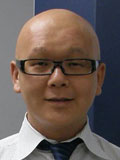 |
|
| Role: | A03 Open-type Researcher | |
|---|---|---|
| Title: | Exploration of protein complex formation mechanism by mass spectrometry | |
| Co-Investigators (renkei-kenkyusha): | Kentaro Ishii Okazaki Institute for Integrative Bioscience, National Institutes of Natural Sciences, Researcher, Ph. D. |
|
| Masanori Noda Department of Biotechnology, Graduate School of Engineering, Osaka University |
||
| Purpose: | Molecular assembly has generally been studied by x-ray crystallography, nuclear magnetic resonance spectroscopy and electron microscopy. We have developed alternative methods using mass spectrometry (MS), such as native-MS and hydrogen/deuterium exchange MS (HDX-MS), which are now complemental methods to the aforementioned techniques, for the structural investigation of molecular assembly. In this research project, we will mainly study two large protein complexes that show dynamic assembly-disassembly reaction in solution. The constituent subunits of the protein complexes replace their positions in the complexes as time passes and eventually construct functional large complexes. The assembly processes of the complexes are clarified by using native-MS, providing macroscopic view of the assembly. So far we found that a 14-mer double-ring homo-oligomer of a proteasome α7 subunit is disrupted upon the addition of α6 subunit into 2 of α6(α7)7. As a next step of the research, we will study the involvement of other α subunits in the complete authentic α ring formation. The achievement of this research will uncover the micro–macro relationships during large protein complexes formations. |
|
Shigetoshi Oiki
| University of Fukui, Faculty of Medical Sciences, Department of Physiology and Biophysics Professor, M. D., Ph. D. |
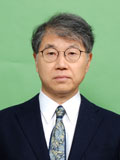 |
|
| Role: | A03 Open-type Researcher | |
|---|---|---|
| Title: | Gating-coupled self-assembly of the KcsA potassium channels on the membrane | |
| Purpose: | Membrane proteins frequently form high-density clusters on the membrane for perform their efficient function. Recently, we found unprecedented dynamic behavior of the KcsA potassium channels on the membrane. First, the channel underwent reversible clustering and dispersion on the membrane, which is tightly coupled to the gating conformational changes (gating-coupled self-assembly). Second, the channel gating exhibited strong dependency on the lipid composition in the membrane inner leaflet, and the lipid sensitivity was rendered by the N-terminal amphipathic helix (M0 helix). These results lead to a scenario for the channel dynamics on the membrane. The lipid sensor detects the negatively charged lipids on the inner leaflet, by which the channel gate was stabilized as the open conformation. The conformational changes in the transmembrane domain altered the interaction between channels, and govern the reversible clustering-dispersion. Coupling of the sub-molecular and supra-molecular events will be examined with the AFM and the single-channel current recordings. | |
Hisashi Okumura
| Research Center for Computational Science, Institute for Molecular Science, National Institutes of Natural Sciences Associate Professor, Ph. D. |
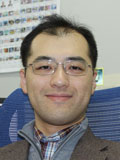 |
|
| Role: | A03 Open-type Researcher | |
|---|---|---|
| Title: | Theoretical study for the dynamic ordering of amyloid fibril | |
| Co-Investigator (renkei-kenkyusha): | Satoru G. Itoh Institute for Molecular Science, Assistant Professor, Ph. D |
|
| Yoshiharu Mori Institute for Molecular Science, Research Assistant Professor, Ph. D |
||
| Hiroaki Nishizawa Institute for Molecular Science, Postdoctoral Fellow of the Japan Society for the Promotion of Science for Young Scientists, Ph. D |
||
| Purpose: | Neurodegenerative diseases such as Alzheimer’s disease are caused by amyloid fibrils of proteins or peptides such as amyloid-β peptides. Amyloid fibril formation starts from monomers of peptides. First, monomers of peptides aggregate and form nucleus. Once the nucleus increases beyond some critical size, it elongates and form the amyloid fibril. We carry out all-atom molecular dynamics simulations and reveal the mechanism of whole dynamic ordering process of amyloid fibril from monomers via nucleation. | |
Kazuya Kikuchi
| Graduate School of Engineering, Osaka University Professor, Ph.D. |
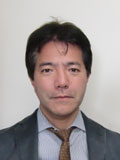 |
|
| Role: | A03 Open-type Researcher | |
|---|---|---|
| Title: | Design, synthesis of chemical probes which clarifies spatio-temporal biological molecular function | |
| Co-Investigator (renkei-kenkyusha): | Yuichiro Hori Graduate School of Engineering, Osaka University, Associate Professor, Ph. D |
|
| Masafumi Minoshima Graduate School of Engineering, Osaka University, Associate Professor, Ph. D |
||
| Purpose: | A development and application of small molecular probes (SMPs) for intravital imaging of cell function at subcellular resolution using two-photon excitation microscopy (TPEM) in living mice is introduced. In contrast to previous SMP-based techniques, our approach enables quantitation of target cell activity and time-lapse imaging of cell functions over a long period of time after simply injecting the SMPs into living animals. Our approach is based on design of an SMP with three chemical properties: i) active-targeting ability, in order to deliver the fluorophore to a specific tissue where the target cells are located; ii) high photostability under TPEM observation, in order to obtain sufficient fluorescence over a long period of time; and iii) fluorescence functionality enabling detection of cell activity. It was shown that the combined use of an SMP with a fluorescent protein (FP) (as a reporter of cell localization) allowed real-time imaging of target cell functions with a high signal-to-noise ratio in living mice. | |
Yasushi Sako
| Cellular Informatics Laboratory, RIKEN Chief Scientist, Ph. D. |
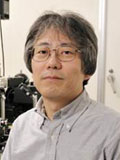 |
|
| Role: | A03 Open-type Researcher | |
|---|---|---|
| Title: | Oligomeirzation dynamics and molecular recognitions of cell surface receptor molecules | |
| Purpose: | Cell surface receptor molecules dynamically rearrange their oligomerization structures responding to the extracellular signaling molecules. In this research project, we will measure and analyze these dynamics using single-molecule imaging in cells. EGF receptor (EGFR) and metabotropic Glu receptor (mGluR) are the main targets. EGFR forms ligand-induced dimers for signal transduction, and molecular rearrangement in the constitutive homo-dimers of mGluR induced by agonist binding is essential for activation. mGluR is also said to form heterodimers with serotonin receptor (5HTR) and mutually regulating their activities. We will analyze dynamics of the movements and oligomerization of these receptor molecules, in addition to the interaction kinetics of the receptors with the ligands, agonists, and intracellular proteins, toward understanding of the physiological meanings of the self-organization of cell surface receptor molecules. | |
Hye-Won Shin
| Graduate School of Pharmaceutical Sciences, Kyoto University Associate Professor, Ph. D. |
 |
|
| Role: | A03 Open-type Researcher | |
|---|---|---|
| Title: | P4-ATPase-mediated dynamic ordering of phospholipids in biological membranes | |
| Purpose: | Lipid bilayers, including those of the plasma membrane and the membrane-enclosed organelles, exhibit asymmetric lipid distributions. Modulation of transbilayer lipid asymmetry is important for a variety of biological processes, such as apoptotic cell death, platelet coagulation, and myotube formation. P4-ATPases, a subfamily of P-type ATPases, regulate transbilayer lipid asymmetry by flipping phospholipids from the exoplasmic (luminal) to the cytoplasmic leaflet. In this research project, we aim to elucidate regulatory mechanisms of P4-ATPases in dynamical ordering of biological membranes and to understand physiological significance of dynamic transbilayer lipid asymmetry. | |
Chikako Shingyoji
| Department of Biological Sciences, Graduate School of Science, The University of Tokyo Associate Professor, Doctor of Science. |
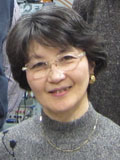 |
|
| Role: | A03 Open-type Researcher | |
|---|---|---|
| Title: | Mechanical activity of dynein and its dynamical ordering underlying oscillatory movement of sperm flagella | |
| Purpose: | Movement of sperm flagella, characterized by oscillatory beating or cyclical bending is produced by the spatial control of sliding between adjacent doublet microtubules along the flagellum. Dynein arms generate force for microtubule sliding. The structural hierarchy is coupled with the expression of higher-order function to generate normal flagellar beating, and the mechanism of regulation of dynein function requires at least four levels: These levels are the mechanical activity of single dynein, the sliding activity along each doublet microtubule, the active sliding pattern around the axoneme, and the active sliding responsible for beat initiation. Our goal is to understand the dynamical ordering of dynein function underlying flagellar oscillation. In this project we focus on the nature of dyneins from the view of these four levels and elucidate dynamical roles of mechanical activity of dynein. Our second project is to elucidate the role of dynamic movement of lipid rafts in sea urchin sperm membrane. Our preliminary findings support a new mechanism involving dynamic behavior of rafts that contain proteins relating to the activity of calcium efflux. Investigation of raft dynamics by imaging a raft marker at a single molecular level would be expected to reveal the dynamical ordering of raft |
|
Masaaki Sugiyama
| Research Reactor Institute, Kyoto University Professor, Dr. Sci. |
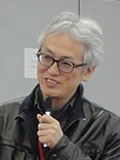 |
|
| Role: | A03 Open-type Researcher | |
|---|---|---|
| Title: | Study on dynamical network and its function of huge protein aggregates | |
| Co-Investigator (renkei-kenkyusha): | Susumu Uchiyama Department of Biotechnology, Graduate School of Engineering, Osaka University Associate Professor, Ph. D. |
|
| Yuuya Nagata Department of Synthetic Chemistry and Biological Chemistry Graduate School of Engineering, Kyoto University Assistant Professor, Ph. D. |
||
| Purpose: | Most proteins has fine quaternary structures consisting of subunits. It is considered that the configurations of subunits are statically and/or dynamically deviated from the fine structures when they are functionalized. Some proteins, such as small heat shock proteins, also make aggregates but do not have fine quaternary structures. It is supposed that the origin of this structural uncertainness comes from dynamical network between the aggregates by exchanging their subunits. The purpose of the study is clarification of the dynamical network mainly utilizing with x-ray and neutron scattering techniques. In the previous study, it was revealed that subunits exchange kinetics and its temperature dependency of homo-aggregates of B-crystallin, which is one of two subunits consisting of eye lens protein, -crystallin. In this study, to analyze this system in more detail, we try to reveal the dynamical system consisting of hetero aggregates (A- and B-crystallins) which is a mimic of real system in eye lens, with the scattering techniques and mass spectroscopy. In addition, we will apply the developed scattering techniques for the other studies in this Shingakujutsu project. |
|
Yoshikazu Tanaka
| Tohoku University Professor, Ph. D. |
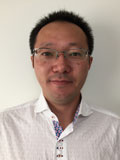 |
|
| Role: | A03 Open-type Researcher | |
|---|---|---|
| Title: | Elucidation of assembling mechanism of pore-forming toxin by structure based functional alteration | |
| Co-Investigator (renkei-kenkyusha): | Min Yao Faculty of Advanced Life Science, Hokkaido University Professor, Ph. D |
|
| Koko Kato Faculty of Advanced Life Science, Hokkaido University Assistant Professor, Ph. D |
||
| Purpose: | Pore-forming toxins (PFTs) are important proteins universally used in a wide range of organisms to attack target cells. Eukaryotes use PFTs as immune proteins, whereas pathogenic bacteria secrete them to kill blood cells. PFTs are expressed as water-soluble monomeric proteins, which assemble on the target cell membranes to form ring-shaped non-lytic oligomer called prepore. After prepore formation, a marked structural change occurs to form membrane-inserted pores. Previously, we determined crystal structures of monomer, prepore, and pore of staphylococcal PFTs. In this research project, we will elucidate the self-assembling mechanism of PFTs by analyzing PFTs designed based on the crystal structures. Furthermore, we apply PFTs to the development of nano-devices. | |
Eri Chatani
| Graduate School of Science, Kobe University Associate Professor, Ph. D. |
 |
|
| Role: | A03 Open-type Researcher | |
|---|---|---|
| Title: | Exploring early protein association and structural ordering during the nucleation of amyloid fibrils | |
| Co-Investigator (renkei-kenkyusha): | Naoki Yamamoto Graduate School of Science, Kobe University, Program-Specific Assistant Professor, Ph. D |
|
| Purpose: | Amyloid fibrils are supramolecular protein assemblies associated with numerous serious diseases. The fibril formation generally proceeds according to a nucleation-dependent scheme, and in many cases, the nucleation is a rate-limiting step controlling the overall kinetics of fibril formation. Exploring detailed mechanisms of the nucleation is therefore one of the most essential issues for understanding pathogenesis in terms of protein states, but much remains to be elucidated regarding how and when the amyloid nuclei emerge. In this study, we will investigate early association events of protein molecules as well as surrounding water to clarify the mechanism of association and ordering of protein molecules governing the amyloidogenic nucleation. In our recent works, we observed association and subsequent structural development of insulin molecules that might be associated with nuclei formation. By expanding types of proteins to be analyzed, and furthermore, by combining interdisciplinary concepts and methodology proposed in the research project, more comprehensive and detailed understanding of early events occurring in the nucleation will be achieved. |
|
Kazuki Terauchi
| Ritsumeikan University Department of Life Sciences Associate Professor, Ph. D. |
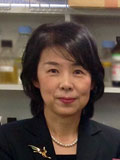 |
|
| Role: | A03 Open-type Researcher | |
|---|---|---|
| Title: | Exploration of dynamic ordering of the reconstituted circadian clock in vitro | |
| Purpose: | In this study, we will depict the molecular mechanisms of the circadian clock focused on the entrainment. Circadian clock consisting of the three clock proteins that are the targets of this study exhibits the high precision function that generates a periodicity of 24 hours keeping the order. The circadian rhythm can be reset in vivo by exposure to some external stimuli and this feature is conserved in the reconstituted clock. We will elucidate the mechanisms underlying the entrainment of the reconstituted circadian clock by biochemical analysis. This will facilitate a better understanding of the principles governing the measuring time by proteins coupled with the development of their integrated functions. | |
Kensaku Mizuno
| Department of Biomolecular Sciences Graduate School of Life Sciences Tohoku University Professor, Ph. D. |
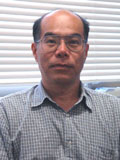 |
|
| Role: | A03 Open-type Researcher | |
|---|---|---|
| Title: | Dynamic ordering of actin cytoskeletal supramolecular complex and its roles in cell functions | |
| Purpose: | Actin cytoskeleton is an intracellular supramolecular complex, composed of actin filaments and various actin-binding proteins. The spatiotemporal control of the dynamic ordering of actin cytoskeletal assembly plays a central role in cell morphogenesis, migration, proliferation, and tissue organization. In this project, we will investigate 1) the mechanisms of mechanical force-induced actin cytoskeletal reorganization, in particular the activation mechanism and the functional role of Rho-GEFs and Rho family GTPases in mechano-transduction; 2) the roles of mechano-sensing and actin cytoskeletal dynamics in 3-dimensional tissue organization, such as cyst and tubule formation; 3) the mechanisms of cell-cell-contact-induced changes in actin cytoskeletal dynamics and cell proliferation. Our study will lead to a better understanding of the regulation mechanisms of dynamic ordering of actin cytoskeleton and their roles in various cell functions, including mechano-sensing, tissue remodeling, and contact inhibition of cell proliferation. | |
Kazuyoshi Murata
| National Institute for Physiological Sciences, National Institutes of Natural Sciences Associate Professor, Ph. D. |
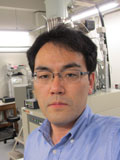 |
|
| Role: | A03 Open-type Researcher | |
|---|---|---|
| Title: | Analysis of structural ordering and dynamic self-assembly of non-enveloped viruses | |
| Co-Investigator (renkei-kenkyusha): | Kazuhiko Katayama Department of Virology ll, National institute of infectious Diseases, Director, Ph. D. |
|
| Purpose: | Non-enveloped viruses represented by norovirus and rotavirus, possess the minimum genome in their body. They thus form the highly symmetrized structures like an icosahedral capsid by combining a few structural proteins ingeniously. This viral capsid assembly would be performed by not only their molecular interactions, but also by assistances of co-factors in their host cells. In this study, we investigate the structural details of the norovirus and rotavirus in vitro and in vivo, in addition to their virus like particles (VLP) using cryo-electron microscopy and tomography. Based on the analyses, we will visually reveal the process of structural ordering of their viruses, and propose a possible model of the dynamical self-assembly in their viral particles. | |
Ryoichi Yamamoto
| Department of Chemical Engineering, Kyoto University Professor, Ph. D. |
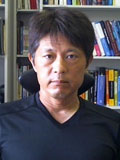 |
|
| Role: | A03 Open-type Researcher | |
|---|---|---|
| Title: | Anomalous behaviors of self-assembled structures and dynamics of microorganisms | |
| Co-Investigator (renkei-kenkyusha): | John Jairo Molina Graduate School of Engineering, Kyoto University, Assistant Professor, Ph. D. |
|
| Purpose: | Microorganisms can often swim freely in water using flagella or cilia, which is quite different from the propelling mechanisms of other creatures such as fish or insect. Fundamental studies based on physical approaches become more and more common for those swimming microorganisms in recent years, but most of those studies are still limited at a single organism level. Although many non-trivial structural and dynamical properties were found in their collective motions, theoretical investigations are not yet fully performed due to the lack of useful theoretical tools for researches. In the present study, we introduce Smoothed Profile Method, a direct numerical simulation method originally developed for colloidal dispersions by ourselves, in theoretical investigations of swimming microorganisms. We expect that the success of present study will lead to many engineering applications as well while our main research motivation is purely fundamental. | |
